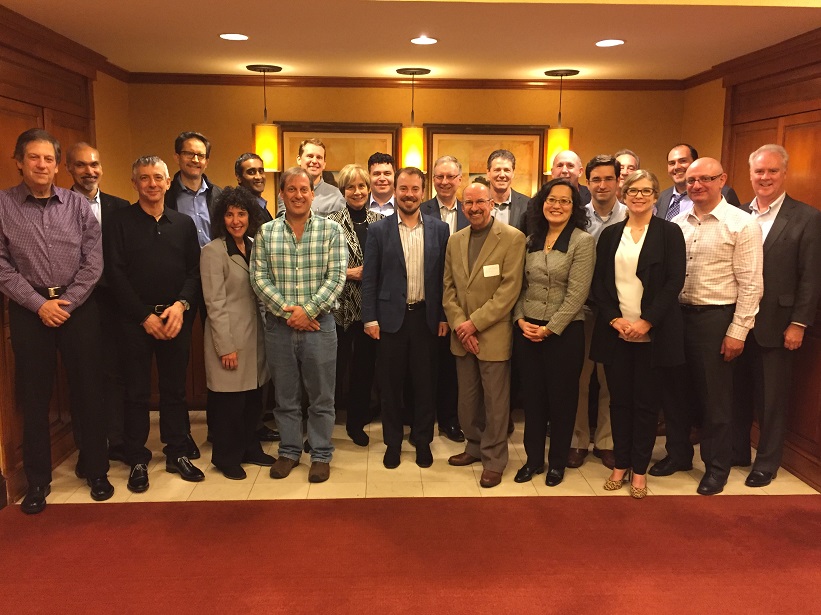Written by Kirstie Turner | Content Manager, EMG-Health
![]()
Launching a new medical device is anything but simple; it is a complex labyrinth. An inventor has an idea which must obtain intellectual property protection, garner investment, toil through development, be cross-examined by regulatory authorities, and ultimately win customers in the market. Lack of communication between different stakeholders has historically made the journey more arduous. Tackling this challenge head on is the Business, Entrepreneurship, Science, and Technology (BEST) conference: a group of roughly 35 experts working across the medical device industry, from inventors to investors, manufacturers and academicians, health system administrators, and FDA.
Their mission? Simple: to accelerate physician entrepreneurship and medical innovation. Their method? Unique: a 2-day conference that opens up conversations with a far-reaching, wide-range of stakeholders, presenting their perspectives and challenges in a trusting and open environment.
The conference is the brain child of Bruce Gingles, retired medical device industry exec, who explains the thought-process behind its creation: “There are many barriers in the medical device development space. There are multiple medical specialties today and I noticed that medical innovators might be talking with their peers, but there was no cross-fertilisation or sharing of best practices. Commercial people were hanging out with commercial people at conventions, regulatory people were at regulatory conferences, engineers were at technical meetings, and venture capitalists were at finance meetings.”
BEST offers a simple, yet highly impactful opportunity to share experiences, approaches, and perspectives: to learn from the other attendees and their respective sectors. “We bring together industry and academics with entrepreneurs, FDA, venture capital, and other industries that make devices or drugs,” outlines BEST member Dr Bruce Gewertz, Surgeon-in-Chief, Cedars-Sinai Health System and BEST co-founder.
Differing from typical medical meetings, the BEST conference focuses on experiences, rather than education on specific products: “This meeting is very different – we aren’t talking about any particular medical product or company. We are trying to share our experiences with each other,” says BEST member and co-founder, Dr Murray Sheldon. Prior to his current role as Associate Director for Technology and Innovation, FDA, Dr Sheldon was a cardiothoracic and vascular surgeon and then innovator in the medical device industry, so he brings a rich perspective to BEST.
The ultimate goal for BEST is not to learn a new skill, but to experience other people’s approaches and challenges in their respective sectors, and then for attendees to use this knowledge to get better at what they do.
Attendees should leave with answers to two main questions: “What can I take back that I have learned that can help me do a better job? And have I been able to give something to someone else to help them improve what they are doing?” Sheldon says, adding: “As we move through the different aspects of our lives, taking care of patients’ needs are at the core of our mission, but we must remember to never stop growing: we must always change in order to grow.” This dedication to continual refinement and growth unites the members of BEST.
Attendee and programme lists are compiled by considering what topics should be discussed, and who is best suited to share their experiences on that subject. “There is a core group of about 5 or 6 of us. We will do some planning and consider the most important subjects coming up in our own fields and how we think we should express that to the group. We identify people who are attending who can address these topics, and if we don’t have someone suitable, we invite new people. Then, we reach out to the rest of the group for any other topic ideas. We spend 6–8 months in planning,” outlines Sheldon.
The conference is centred around presentations from attendees: “Our main format is a series of topical panels. We have 4 people on average on each panel and each person gets 8–10 minutes to present their perspectives. There are lengthy discussions at the end of each panel. They are less about making people smarter, and more about provoking discussion,” explains Gingles.
Presentations and discussions are a critical part of the conference, but equally important is the down time – the social aspect where networking and discussions are fruitful, as Gewertz says: “A lot of the success of BEST comes from the networking. People leverage other people in the room to help solve their problems. For a lot of these people who are 30 or 40 years into their career and this is the first time that they have met someone from these other sectors. They may have never sat down with someone from the FDA or a venture capital partner and had the opportunity to talk and ask questions.”
The impact of the conference has been lasting and significant for many of the attendees. “BEST has led to friendships and relationships that may not have occurred otherwise. But, maybe more pragmatically, it has taken people like me, who work in an academic medical centre in an innovative space, and dramatically increased my understanding of the barriers to bringing products to market to ultimately help patients,” explains Gewertz.
Money does not play a role in the BEST conference, another element setting it apart from other medical meetings. “From the beginning, we said we were not going to have any sponsors, honoraria, or exhibitors. Everyone pays their own way for everything, so no money is exchanged. Nobody makes a penny on the meeting except the hotel and restaurant,” says Gingles. Along with this mandate, the conference abides by Chatham House Rule: the information discussed can be used, but only with the permission of those whose ideas and statements are shared. This fosters open discussions and builds trust in the conference.
The core group at BEST have created something special that brings together people who may not otherwise have had much contact, despite working towards a common goal. Future-proofing the culture and ideology behind the conference is critical. “In the last few meetings, we have recognised that several of us are on the older side, heading towards retirement, and may not be able to attend much in the future, so we wanted to bring in a younger crowd to let them learn from us and hopefully carry this on into the future,” explains Sheldon.
Age is not the only area BEST is focussing on for future diversification. “We want to have more diversity at BEST of all the important types,” says Gingles. Having more women on the attendee list, as well as people from more diverse backgrounds, brings a wealth of ideas and perspectives to the mix. “That keeps the ideas really fresh,” adds Gingles.
BEST is successful because everyone is there for the same reason. “The glue that sticks us all together is that we all come together driven by the same motive. We all have patients at the front and centre of what we are trying to achieve. We are not trying to make money or develop the next best gadget – we are trying to consider alternative viewpoints to improve healthcare in our own clinical areas and around the world,” says Sheldon.
This united mission from all members to enhance and improve the industry’s ability to develop medical devices that can improve patients’ lives, without any ulterior motives, is at the core of what makes this conference so important and impactful. Gingles concludes: “This is the only meeting in the world that I am aware of that brings such a wide range of stakeholders together in one room at the same time. The mission is very simple: to accelerate physician entrepreneurship and medical innovation. That is it.”








